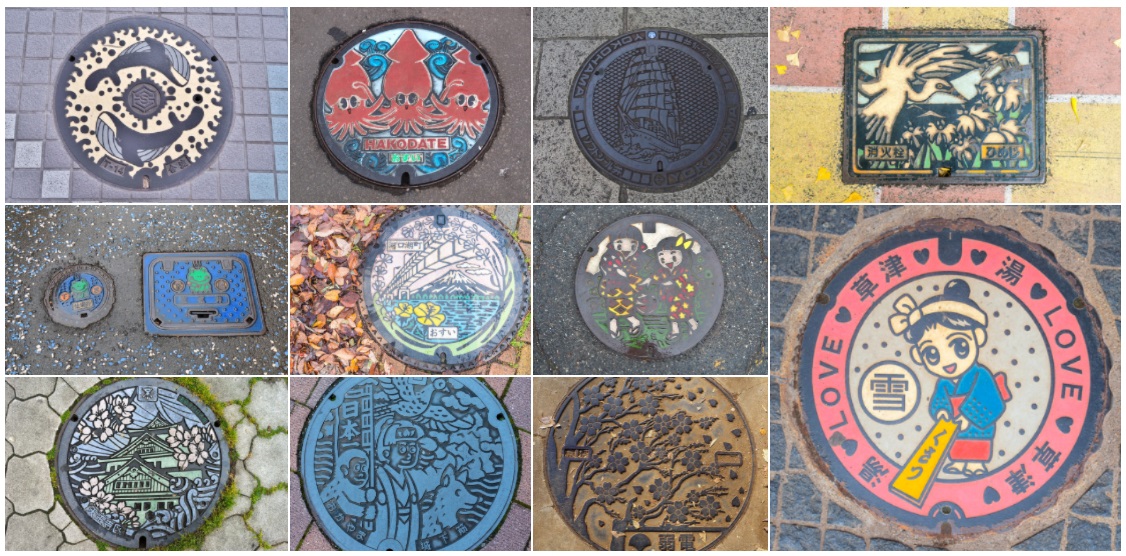You know that one seemingly perfect friend who looks as if he/she is on a perpetual Instagram filter, even when he/she is doing the most boring thing like buying groceries or stirring a cup of tea? If countries were people, Japan would be him/her.
For most people, the word ‘manhole’ conjures up an unpleasant image (or for certain individuals like our immature editor, something to giggle about). But in Japan, manhole covers are fun, colourful and artistic. Trust the Japanese to turn even the most mundane things into something extraordinary.
Every city and town has its own manhole cover design which reflects something unique to the area. It can be anything from the place’s main tourist attractions, nature, history and traditions, or even the people themselves. Many towns and cities have several different ones, and many travelers have discovered the fun of hunting down all the different designs from street to street!
Gotta Catch ‘Em All
Realising that enthusiasts would travel to every nook and cranny to find their favourite manhole cover, the Japanese came up with collectible cards for these ‘Drainspotters’ (also ‘Manholers’, fans of manhole covers). As expected from the country that came up with Pokémon, Yu-Gi-Oh! and Digimon.
GKP (Gesuidō Kōhō Purattohōmu, Sewage Publicity Platform) has released 1.4 million cards with 293 different cover designs, each comes with that particular manhole cover’s GPS location. If you’re interested to become a drainspotter yourself, head to gk-p.jp/mhcard/ (in Japanese).
Japanese manhole covers are a thing of beauty. With hundreds of different designs around the country, there’s enough manhole covers to warrant multiple visits to the Land of the Rising Sun. Here are some of our favourites:
1. Hakodate

Many cities go with their specialty food when it comes to their choice of manhole cover design. One example is Hakodate, a port city that is famous for their seafood, especially their squids. They even have a ‘Squid Dance’ that is usually performed during their local festivals! The squids on their manhole covers are so cute, you’d want to swear off eating them! Or maybe not, because then you’d have to miss out on the city’s specialty, Iki-ika-odori-don (‘dancing’ squid atop a bed of rice). The main draw of the dish is how the fresh (but very dead) squids wiggle when soy sauce is poured over them.
2. Himeji

Himeji Castle (Himeji-jo) is a UNESCO World Heritage Site and also said to be the most visited castle in Japan, and yes, they do have their castle on some of their manhole covers. But there are also Himeji manhole covers with white herons flying over a field of White Egret Orchids (Pecteilis radiata). The heron is a reference to Himeji Castle’s nickname, Shirasagi-jo (White Heron Castle), and the orchid is also a symbol of the city.
3. Matsumoto

The city of Matsumoto of Nagano Prefecture has a manhole cover design that depicts two little girls in traditional kimonos playing with colourful silk yarn handballs. These balls are called temari, believed to be have been created by the wife of the ruling Matsumoto Clan nobility some 200 years ago. A symbol of harmony, temari handballs are now popular as good luck charms.
4. Tokyo

Tokyo has a wealth of manhole cover designs, but this particular one can be seen around Ueno Park, one of the most popular spots for hanami (cherry blossom viewing), a beloved springtime tradition. Although cherry blossoms can also be found in other cities, Ueno’s manhole cover specifically depicts Somei-Yoshino Sakura, considered to be the King of Cherry Blossoms, and also one of Tokyo’s most famous symbols.
5. Yokohama

Yokohama used to be the biggest seaport city in Japan, so there’s no prize for guessing what kind of imagery they’d pick for their manhole covers. Debuted in 1930, former training vessel Nippon Maru was originally launched in Kobe, but has now permanently docked in Yokohama and functions as a museum at Nippon Maru Memorial Park.
6. Okayama

Okayama is said to be the birthplace of Momotaro, the ‘Peach Boy’ who was born out of a peach and had three kick-ass sidekicks namely The Dog, The Monkey and The Pheasant. All over Okayama, you will see tributes to this beloved folktale, including on many of the manhole covers.
7. Osaka

There’s little surprise that some of Osaka’s manhole covers are engraved with the image of Osaka Castle (Osaka-jo), the city’s pride and joy. You can also see cherry blossoms in the foreground, which is befitting as the castle is also popular as a hanami (flower viewing) spot.
8. Kochi

Kochi is a city that faces the Pacific Ocean, a favourite destination that offer various seaside activities such as surfing, fishing, paragliding, paddle-boarding and most of all, whale-watching. Naturally, one of the manhole cover designs found in the city is engraved with an image of two whales.
9. Gunma

Gunma is a city famous for its onsen (hot springs). Engraved on their manhole covers is Yumomi, a traditional method to cool down hot spring water. Instead of mixing cold water in and risking diluting the minerals, workers stir the hot spring water with large paddle boards.
10. Gero

Just like Gunma, Gero is also famous for its onsen (hot springs), so you might be wondering why the city has frogs on some of its manhole covers. Well, ‘gero’ happens to be the animal sound for frogs in Japanese, just like ‘ribbit’ is in English. So don’t give the city a miss just because you have ranidaphobia (fear of frogs), rest assured that Gero is not infested with them.

